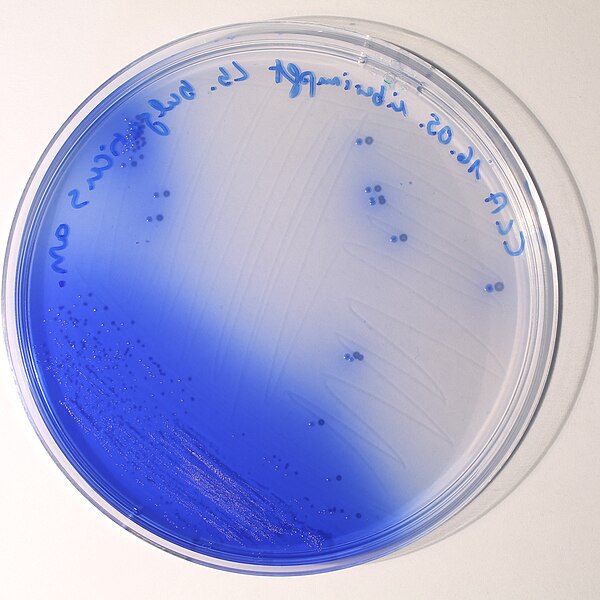Lactobacillus delbrueckii subsp. bulgaricus
Lactobacillus delbrueckii subsp. bulgaricus is the main bacterium used for the production of yogurt. It also plays a crucial role in the ripening of some cheeses, as well as in other processes involving naturally fermented products. It is defined as homofermentive lactic acid bacteria due to lactic acid being the single end product of its carbohydrate digestion. It is also considered a probiotic.
Lactobacillus delbrueckii subsp. bulgaricus
Lactobacillus bulgaricus (Lactobacillus delbrueckii subspecies bulgaricus) colonies grown on China Blue Lactose Agar, after anaerobic incubation.
Yogurt is a food produced by bacterial fermentation of milk. Fermentation of sugars in the milk by these bacteria produces lactic acid, which acts on milk protein to give yogurt its texture and characteristic tart flavor. Cow's milk is most commonly used to make yogurt. Milk from water buffalo, goats, ewes, mares, camels, and yaks is also used to produce yogurt. The milk used may be homogenized or not. It may be pasteurized or raw. Each type of milk produces substantially different results.
A plate of yogurt
Unstirred Turkish Süzme Yoğurt (strained yogurt), with a 10% fat content
Tzatziki or cacık is a meze made with yogurt, cucumber, olive oil and fresh mint or dill.
A coffee filter used to strain yogurt in a home refrigerator






